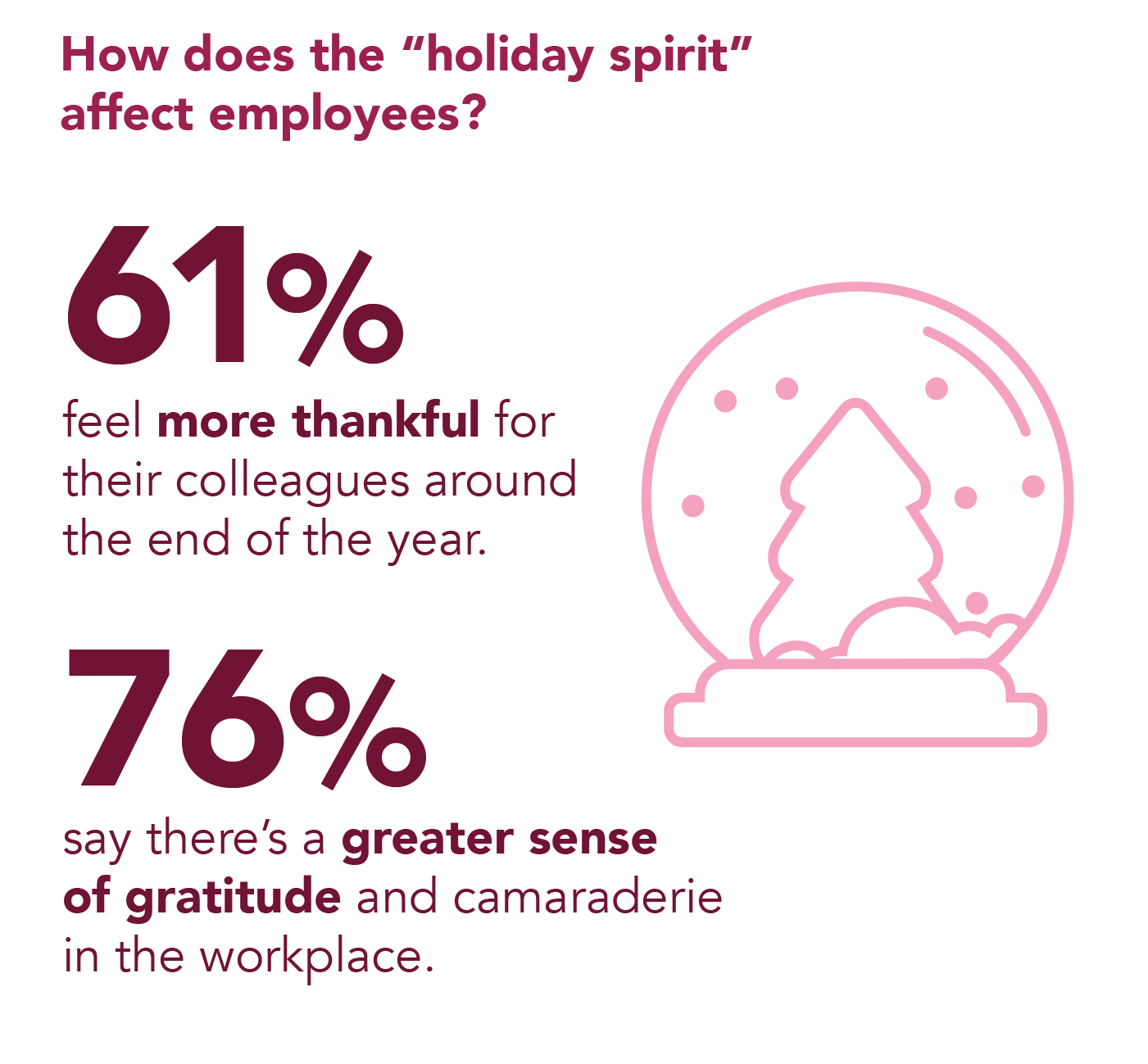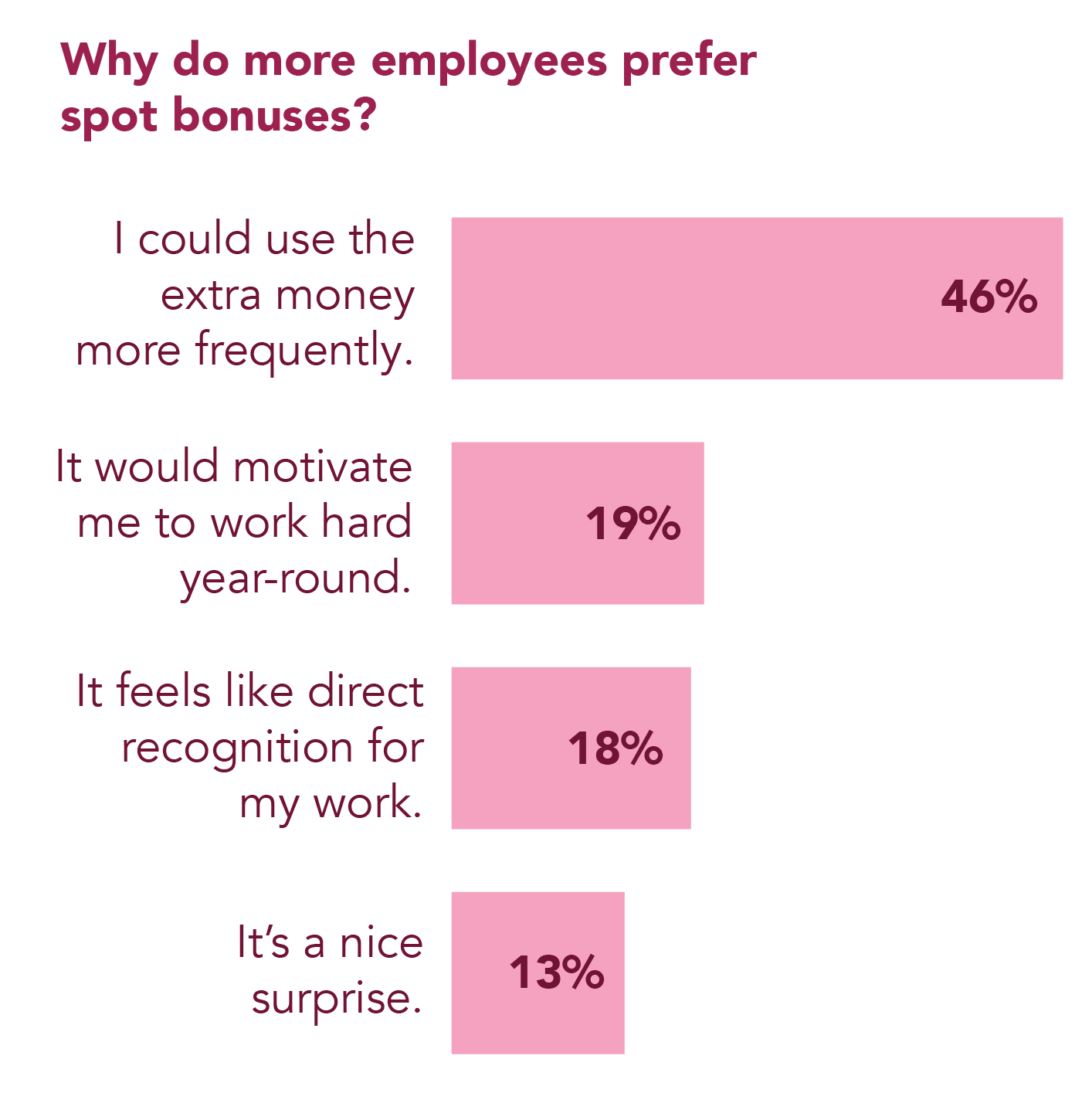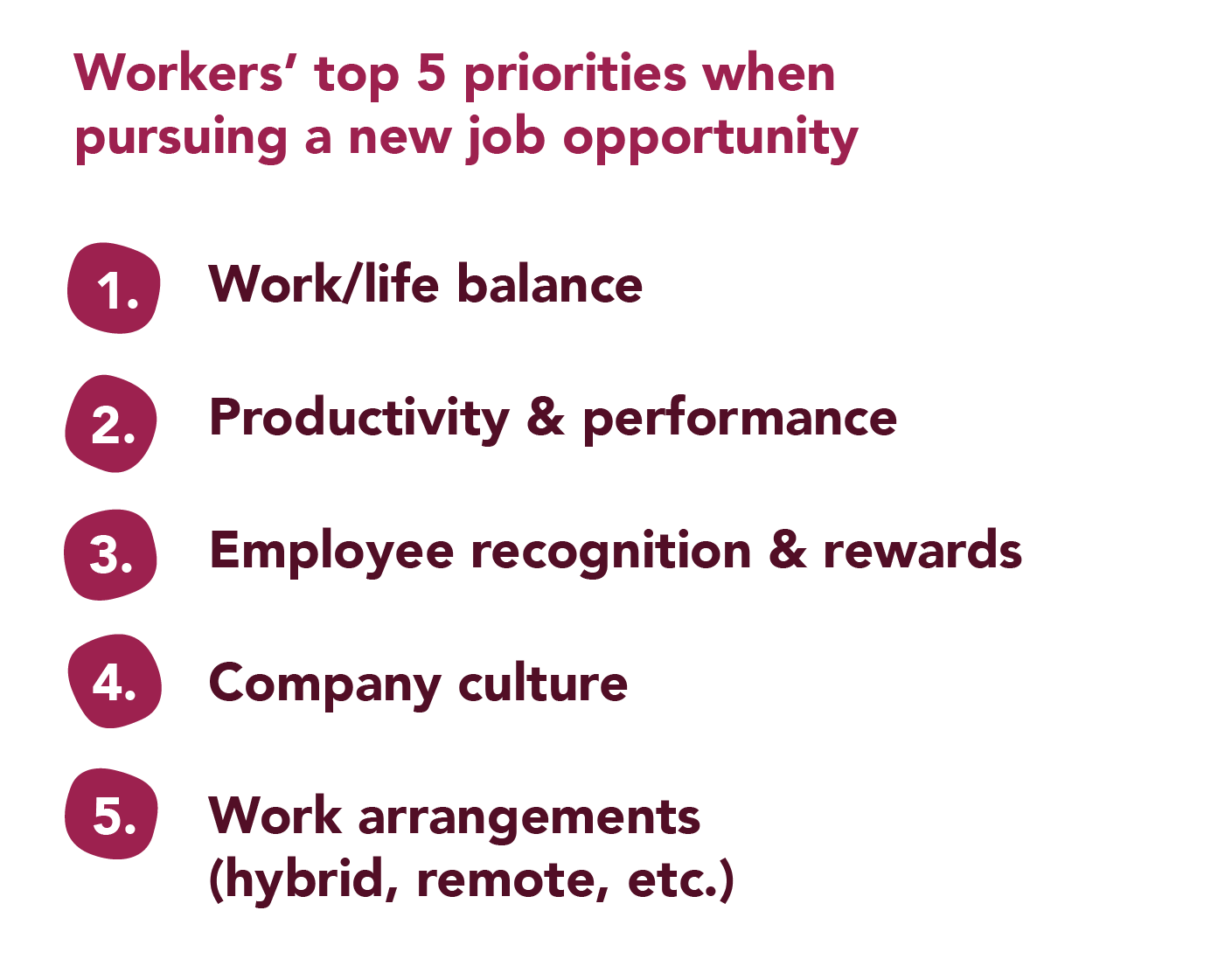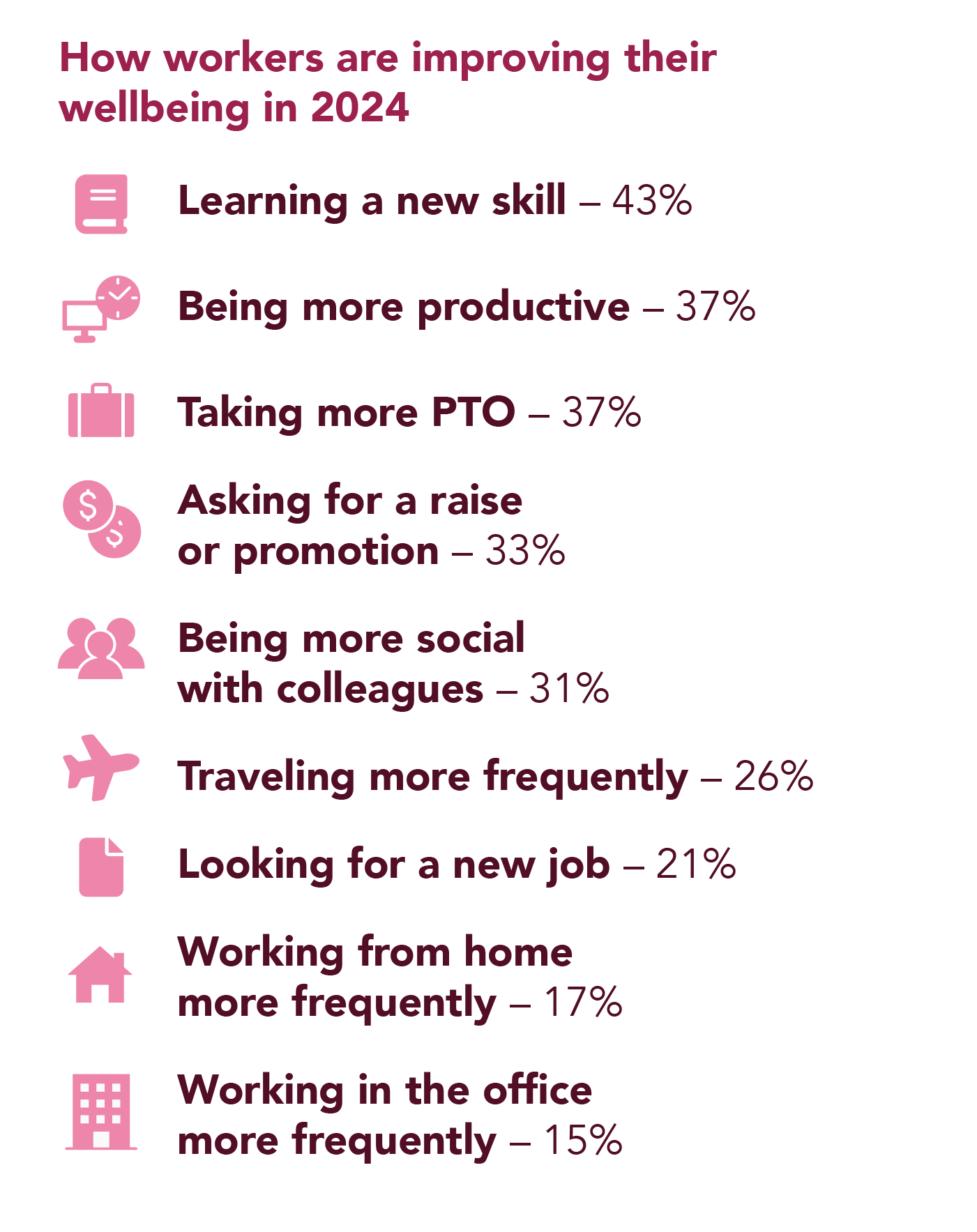Human Workplace Index: Transforming Culture in the Season of Giving

The end of the year is supposed to evoke feelings of warmth: in some regions of the world, the first snowflakes are falling on cozy winter days, while others are enjoying the start of summer. A number of cultural and religious holidays fall at this time of year, and people often take off work to travel and reconnect with loved ones. Projects are completed, and to-do lists are crossed off, and despite the air of hustle and bustle, we’re encouraged to pause and reflect on what we’re thankful for.
But do people actually feel different at work during this time? Or does the pressure of reaching goals and “wrapping up” make it harder to experience that holiday cheer?
For our first quarterly Human Workplace Index (HWI), we’re exploring how U.S. employees experience the “season of giving” in the office. Plus, we’ll look at how employees’ wellbeing in the workplace changed over the course of 2023, and see how those findings reflect in their goals for 2024.
Reigniting Recognition in the Season of Giving
According to this quarter’s HWI, the “holiday spirit” is no myth: a majority of U.S. workers (60.8%) feel more thankful for their colleagues around the end of the year, and 75.9% say there is a greater sense of gratitude and camaraderie in their workplace at this time.

When employees take action on these feelings of thankfulness, they can actually reduce their colleagues’ stress: nearly 70% of respondents said that receiving public appreciation from their colleagues at the end of the year reduces their potential stress around meeting year-end goals. Seeing colleagues receive that positive recognition in public creates a ripple effect throughout the business, precipitating cultural change that lasts long into the New Year and beyond.
Companies often choose the end of the year as a time to give employees extra recognition. Some hold a lavish holiday partyOpens in a new tab to stoke employee morale during the year’s final stretch. For many others, the end-of-year bonus is the traditional incentive.
However, employees are divided on the best way to receive their bonus. When asked to choose between receiving one lump sum bonus at the end of the year or multiple, smaller “spot” bonuses throughout the year, 47% chose the spot bonuses, compared to 40.8% who preferred the lump sum.
Their reasons for each preference are varied and nuanced. Among those who prefer the traditional lump sum, nearly three-quarters say they prefer it because it feels like a reward for the whole year, while 40.9% say it motivates them to work harder.
Meanwhile, of those who prefer the spot bonuses, 46.2% say they could use the extra money more frequently, while 18.9% say it would motivate them to work harder all year, as opposed to just at the end of the year.

Spot bonuses are an effective way to honor individual achievements while yielding positive employee outcomes at a company-wide scale. By rewarding and reinforcing outstanding performance in-the-moment, they heighten employees’ sense of accomplishment and incentivize a cycle of continued achievement and growth. As our September HWI revealed, there is incredible power in a “thank you,” but some contributions merit a little more than that.
Bonuses and other year-end rewards should be just one part of a larger recognition program, ideally one rooted in peer-to-peer, social recognition. Social recognition is a powerful way to incentivize employees’ productivity. Personalized recognition messages are displayed in a public feed for teams to see (or shared privately, if that’s what an employee prefers), promoting an environment of connection and gratitude that becomes a cultural constant, rather than just a seasonal trend. In fact, as our research with Gallup shows, employees who strongly believe that recognition is a part of their organization’s culture are 3.7x more likely to be engaged, and half as likely to experience productivity-killing burnout.
This quarter’s survey found that employees are keen on the potential of social recognition combined with monetary recognition: 96.6% of employees say they would use redeemable points received from being recognized by their coworkers to buy gifts for themselves and/or others.
When 16.5% of employees earmark their end-of-year bonuses for holiday gift-giving, the opportunity to use recognition points to purchase gifts not only reduces the financial stress many employeesOpens in a new tab experience around the holidays, but gives them the chance to truly reward themselves for their hard work. An overwhelming majority of employees (82.8%) also say they would recognize their coworkers more frequently if it meant that praise would translate into financial rewards.
Naturally, this spirit of gratitude also extends to charitable giving. Despite economic uncertainty, 65% of employees still plan to give to charity this season – 23.4% of workers said they’re actually giving more than they did last year. However, nearly 30% do plan to give less than usual, so leaders should be mindful, especially if their company hosts an annual giving campaign around the holidays.
Rewards gained through recognition programs can help employees donate to their preferred causes and charities throughout the holiday season and beyond. Over half of all respondents said, if given the opportunity, they would use points from being recognized by their coworkers to make a charitable donation. Talk about paying it forward.
Reflecting on 2023
The year began with grim promises of an impending recession, which set the tone for what would become a year of enduring uncertainty. While economists say we’re not entirely out of the woodsOpens in a new tab, yet, optimism in the economy has grown considerably over the past months, bolstered by job gainsOpens in a new tab, and inflation reductionOpens in a new tab. Now, as 2023 nears its close, leaders are focused on building a strong foundation for 2024.
As our data shows, employees were fairly loyal to their organizations this year. Most respondents (58.3%) had no plans to leave their jobs in 2023, and their reasons for staying point to an overarching need to feel cared for and supported in their jobs: “I had good benefits” ranked as the top response (54.9%), followed by “I liked my coworkers” (51.3%) and “I was compensated fairly” (41%).
That said, not everyone who stayed in their job this year originally planned to do so. For the nearly 20% of employees who ended up staying, it was career mobility and positive organizational changes that ultimately kept them on staff. The top response among these employees was “I received a promotion and/or raise” at 37%, followed by “there was a positive change in my company’s culture/management” (35.3%) and “new opportunities at work encouraged me to stay” (29.4%).
The return to the office (RTO) was one of the hottest workplace topics this year, but it wasn’t as big of a factor in retention as some might think. Respondents to this month’s survey actually ranked working arrangement one of the least important factors they consider when searching for a new job, suggesting that the key differentiator may not necessarily be where employees work, but how.

Given these results, it’s clear that employees want to work for high-performing organizations that value their humanity and recognize their contributions. Interestingly, these were also the top three categories where employees said their companies made the most positive change this year. This could signal that companies are listening more closely to their employees’ feedback and using it to build a better workplace. It helps that these factors are closely interrelated. By providing employees with flexibility and balance while investing in a culture of recognition, companies will lay the groundwork for improved productivity and performance, strengthening the organization and providing a more fulfilling employee experience.
Looking Ahead to 2024
At many companies, planning for the next year is well underway, if not already complete, and as our survey shows, employees are headed into the New Year clear-eyed and full of ambition.
When asked what actions they’d take to improve or maintain their wellbeing at work in 2024, the most popular response was to learn a new skill (42.9%). While skills may not be the first thing that comes to mind when we think of the word “wellbeing,” many employees see them as the gateway to a higher salary, better benefits or working conditions, or even an entirely new career path – all of which can vastly improve their wellbeing, whether by boosting their finances or improving their mental health. In recent years, that path has become even more direct, with more companies turning to skills-based tacticsOpens in a new tab for hiring and promotion. Unsurprisingly, other popular responses to this question included “be more productive” (37.3%) and “ask for a raise or promotion” (32.6%).

Employees also have high expectations for their companies to help improve their wellbeing at work in 2024. 60.9% of employees stated “increase my salary” as a way to improve their wellbeing, but they also want better benefits (45%), more PTO (36.5%) and increased flexibility, allowing them to work flexible hours or from home (35%).
However, when asked what one thing they wanted their current companies to improve the most in 2024, “employee recognition & rewards” was the top response (26.8%). Salary and bonuses could fall in the “rewards” category, but recognition runs deeper than that. People are ambitious enough to learn new skills. They value productivity and performance in their organizations. And so, they want to be rewarded for the hard work they bring to the table.
Strategic recognition has a transformative impact on both organizational culture and employee morale, both of which considerably influence a company’s bottom line. As employees continue to prioritize their wellbeing and professional development in 2024, companies will reap the most benefit from their employees’ ambition by recognizing their contributions – and transform their culture in the process.